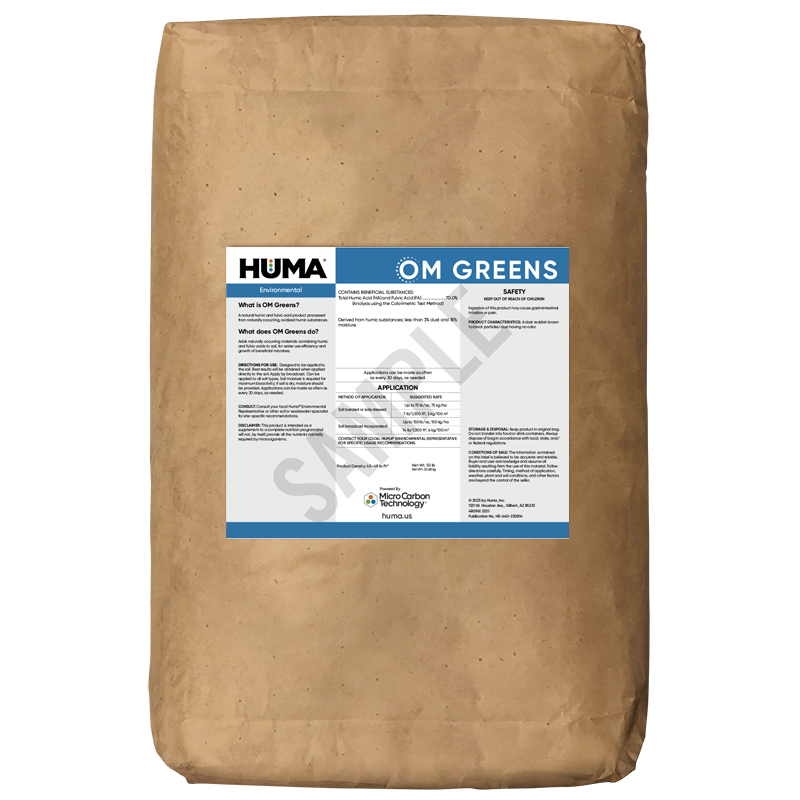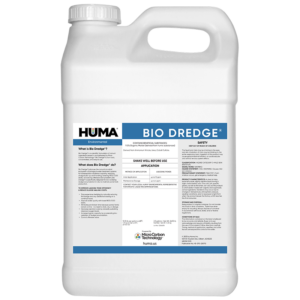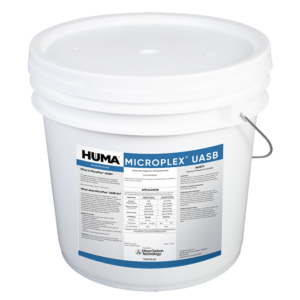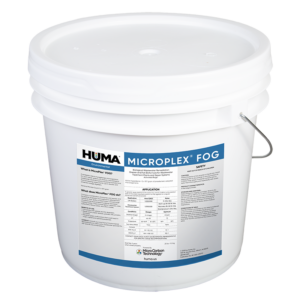OM GREENS (HE)
Benefits of Use:
- Uniform granular size promotes even coverage/distribution of humic/fulvic acid for sustainable carbon benefit
- Long-term soil organic-matter building
- Increased water penetration
- Increased flocculation of clays
- Promotes conversion of fertilizer into plant-available food
- Increases soil nutrient mineralization
- Sustainable soil microbial activation
FAQs
Related Products
Related Case Studies

Bio Energizer® Reduces Sludge at Small Municipal Facility
Problem A small town in Utah (pop. 1,800) had a municipal wastewater system with a flow rate of 192,000 gallons per day. The system included a series of four lagoons that tapered to a depth of 6 feet, although at this time only Ponds 1 and 2 were being evaluated for treatment as they were

Bio Energizer® Reduces Sludge at Small N.M. Municipal Facility
Problem A small town in New Mexico (pop. 1,300) had a municipal wastewater system with a flow rate of 50,000 gallons per day. The system included a series of three lagoons that tapered to a depth of 13 feet. Pond 1 had an average sludge depth of 1.9 feet, Pond 2 averaged 3.5 feet, and

Bio Energizer® Toxicity Testing
Abstract Bio Energizer® is frequently used to facilitate bioremediation of wastewater. A study was conducted by an independent laboratory to measure possible negative effects Bio Energizer® might have on a freshwater test species (rainbow trout). Using EPA-approved methodology to evaluate Bio Energizer®, the lab administered the product at 10 ppm to a test tank and
Related Blog Posts

Get the “P” Out of There!
By Heather Jennings, PE Phosphorus is one of the most abundant elements on earth. It’s essential for adenosine triphosphate (ATP), the energy carrier life is built on. But in excess in our lakes and ponds, we see large algal growths occurring. Many times, these algal blooms suffocate the surrounding aquatic life and or produce toxins

Heather Jennings Is Featured Guest on “Better Together” Podcast
Paper360, a bimonthly magazine for the pulp & paper industry, produces a podcast called “Better Together: Conversations With Innovative Leaders.” At a recent podcast recorded live at SuperCorrExpo in Orlando, Fla., Heather Jennings, Director of Probiotic Solutions and Host of our own Water Break Podcast, was interviewed on the topic of diversity and innovation for

PS and RWAAz Host PFAS Workshop
Probiotic Solutions®, along with the Rural Water Association of Arizona, conducted a workshop today on Per- and Polyfluoroalkyl Substances (PFAS) at Probiotic Solutions/Bio Huma Netics headquarters in Gilbert, Arizona. The workshop, titled “PFAS: The Phantom Menace,” featured presentations by Heather Jennings, PE, Director of Probiotic Solutions, and Marci Payne, Sales and Marketing Manager at Legend






